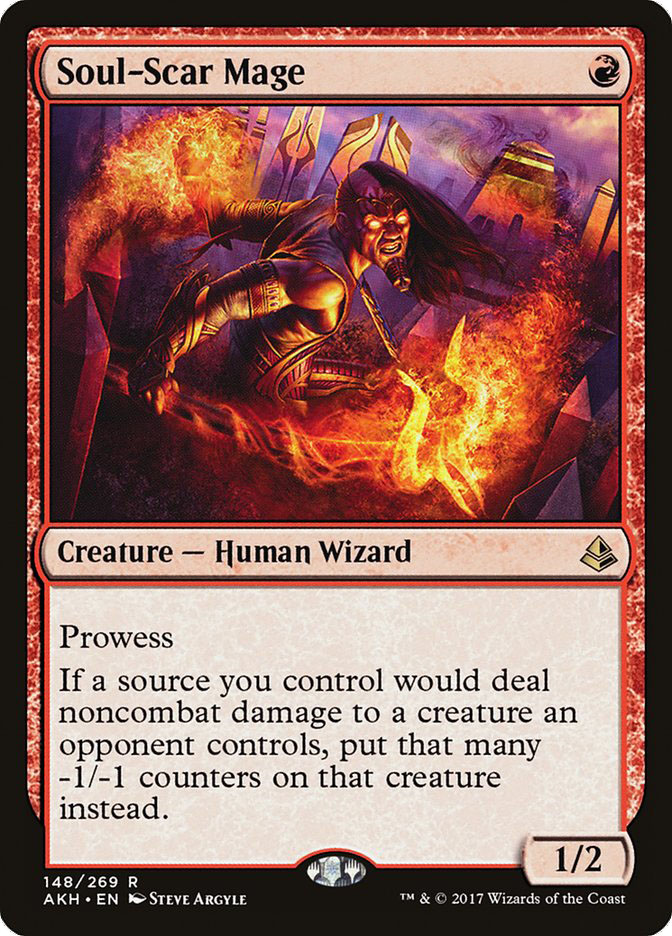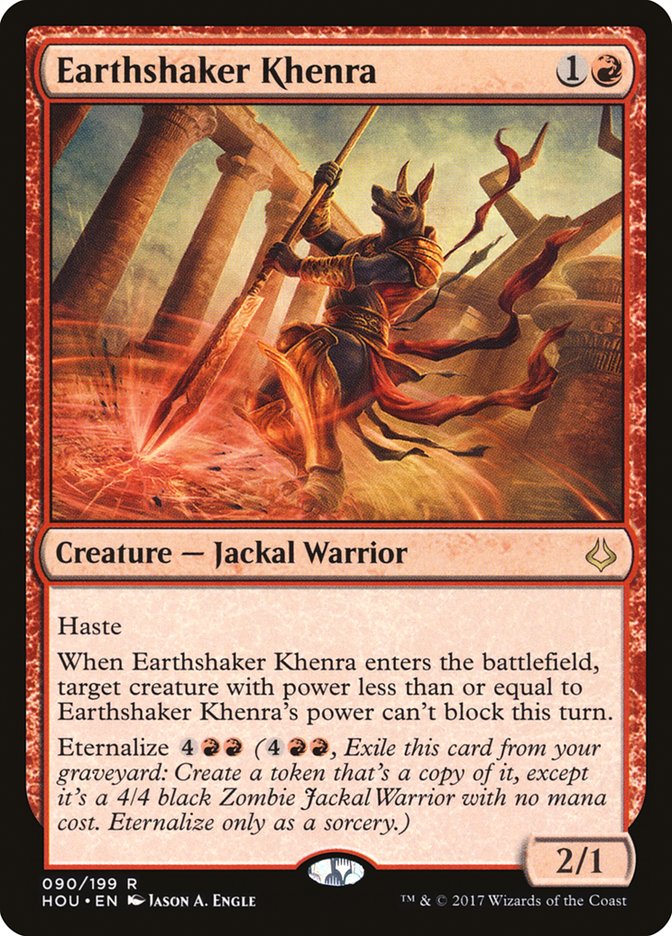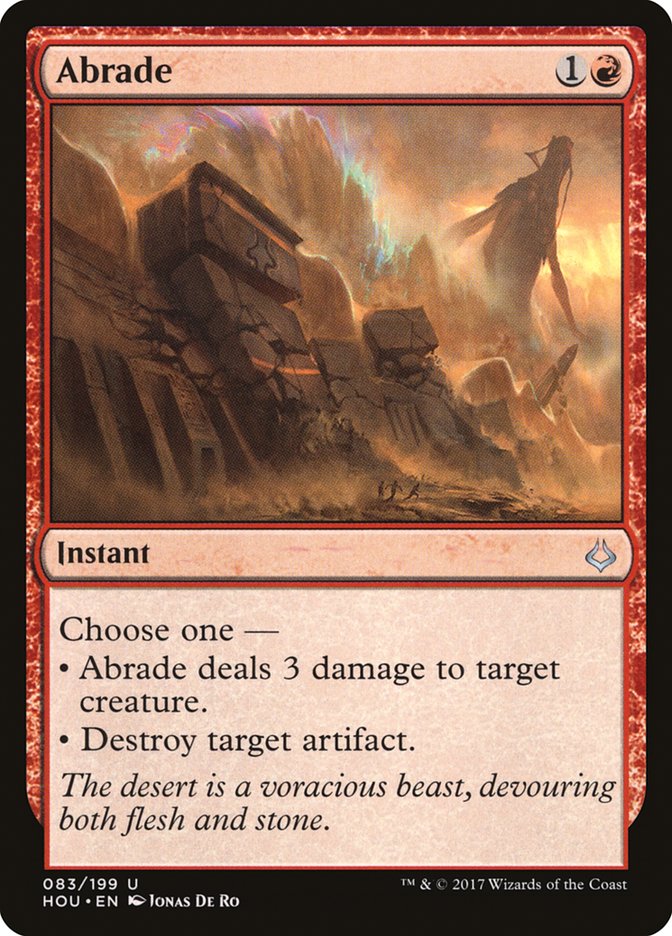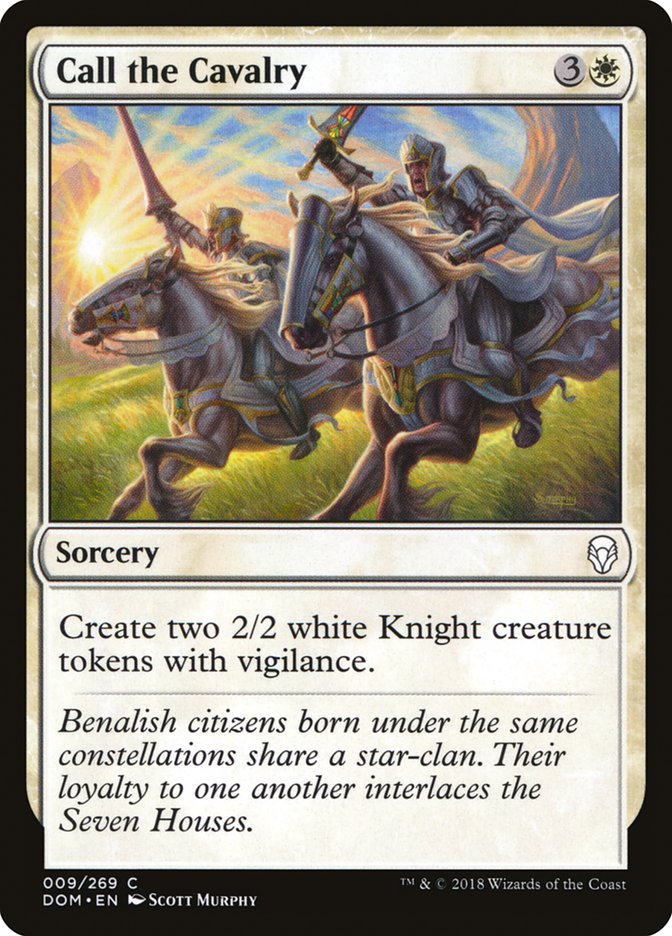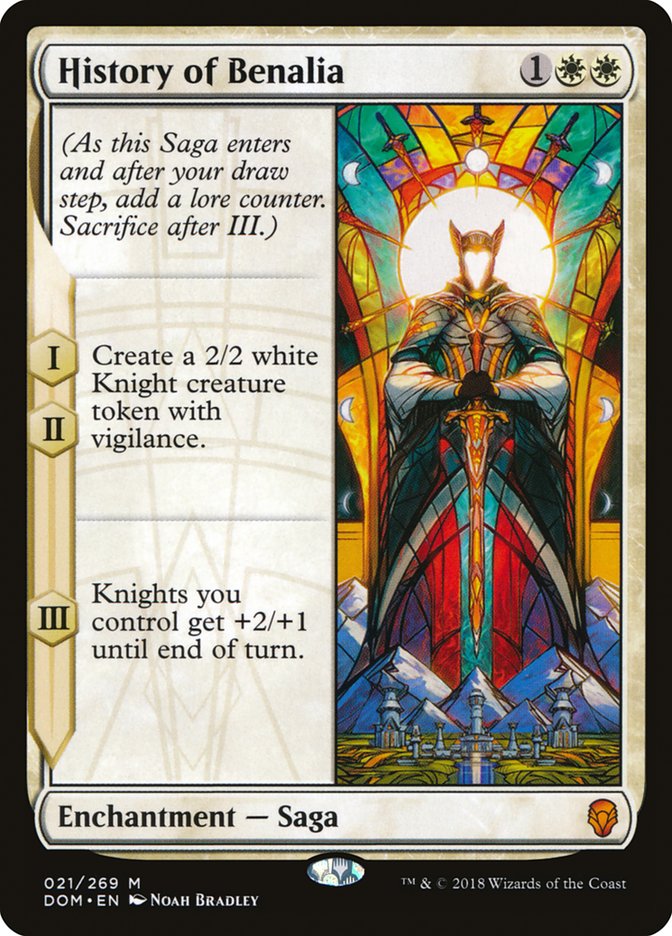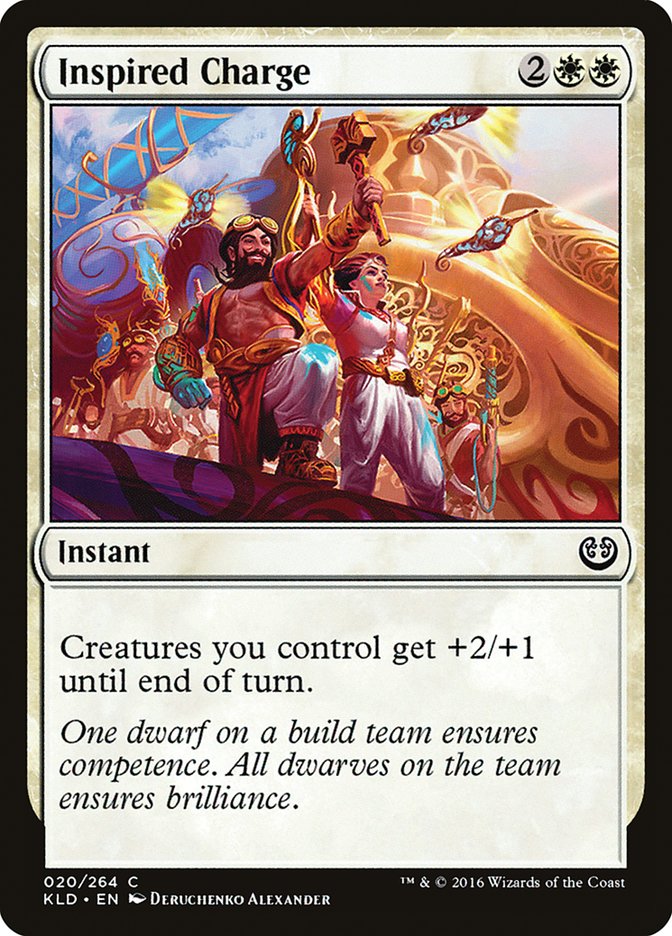Week one of Dominaria Standard is in the books, and we’re in a
brave new world. Sure, some things haven’t changed. Mono-Red Aggro was the
most played deck in the Standard seat on Day Two of #SCGATL, Torrential
Gearhulk was highlighted in the winning deck, and Hadana’s Climb continued
to be excellent. R/B Aggro had been picking up steam at the end of Rivals of Ixalan Standard and it’s second-place finish last
weekend sure continued that trend.
But other things have changed. There was no U/B variant in the Top 8 of #SCGATL. Wait, scratch
that, there was no U/B variant at all on Day Two. Wait, scratch that, there
were no copies of The Scarab God at all in the Top 8. How the mighty have
fallen, I guess. The control deck of choice was instead a
tournament-winning U/W deck featuring Teferi, Hero of Dominaria.
Of course, we should take all these metagame factoids with a grain of salt.
Week one Standard tournaments often have results that end up looking like
the format we come to know and love, and it being a team tournament on top
further muddles the mixture. It’s theoretically possible to have a Standard
deck win the tournament that never won a match, and while that’s very
unlikely, we do need to keep in mind that the decks we’re looking at we’re
not selected entirely on their own merits.
But that’s not at all to say that the results of #SCGATL were useless. Even
with the understanding that it’s very likely that the metagame we saw last
weekend is subject to change, there’s a lot of important takeaways from
these results. We now have a better understanding of what Dominaria cards we need to be sure to understand, and more
importantly, the contexts in which we need to understand them.
There’s a lot of edge to be gained at the beginning of a format by creating
a sweet new deck and winning with it left and right before your opponents
understand what’s happening. That’s great when you get there, but is very
difficult to accomplish and sometimes the idea you put time into just won’t
pan out.
That’s why I think it’s important to always focus on how the cards play.
Not necessarily on how the deck you’re playing is doing or how the matchup
you’re looking at goes, but how the cards themselves line up. What
sequences are good, what sequences are bad, which interactions are more
powerful than you thought, and which are less. Things like that. These
things will be important and relevant for the entirety of the format going
forward, regardless of whether the decks you learned about them from make
it or not. So, what is there to learn from the decks of #SCGATL?
The Increased Value of Soul-Scar Mage
One of the big important Magic lessons that will burn you time and time
again until you figure it out is that set releases don’t just present you a
bunch of new problems to solve, they also force you to take another look at
a bunch of puzzles you thought you solved already. Case in point:
If Magic decks gave out awards to their rosters at the end of seasons like
high school sports teams, I would place a large wager that Soul-Scar Mage
is going to get Mono-Red’s Most Improved Player award at the end of this
one. Prior to Dominaria, Soul-Scar Mage was a solid role-player in
the deck but nothing spectacular. Now, we’re going to have to accept the
fact that Soul-Scar Mage is an adversary worthy of our respect.
But before we get into why that is we need to introduce the big Dominaria update to Mono-Red, Soul-Scar Mage’s new best friend:
I think everyone’s familiar with the ‘combo’ here by now. If you cast
Goblin Chainwhirler and resolve its trigger with a Soul-Scar Mage on the
battlefield, you leave each member of the enemy team a -1/-1 counter
weaker. In some matchups, this won’t matter. In others, Soul-Scar Mage will
enable Goblin Chainwhirler to permanently weaken every creature your
opponent controls. How big of a deal is that?
Big.
Obviously, the matchups we’re talking about are the ones where Mono-Red is
playing against some form of creature deck employing bodies that aren’t
mainly 1/1s. Midrange decks, in other words. The one thing these decks
could always count on against Mono-Red in the past was that if they could
survive the initial Mono-Red onslaught, their creatures would be bigger and
easily dominate the battlefield once the midgame was reached.
Well, maybe dominate the battlefield isn’t exactly the terminology I should
use. After all, it’s hard to dominate a battlefield that contains Hazoret
the Fervent. Indestructibility is rough like that. Really, the issue at
stake isn’t the ability to dominate the battlefield. Dominate is an
imprecise word. What matters is two things: the ability of the midrange
deck to stabilize and the speed at which they can turn the corner.
The Soul-Scar Mage + Goblin Chainwhirler combination attack doesn’t
necessarily impair their ability to stabilize. Sure, their creatures are a
little smaller. Sometimes this will mean they become a legal target for an
Earthshaker Khenra trigger that they otherwise would have been ineligible
for, but generally, the toughness on red creatures is low enough that if
the size reduction is relevant to the creature combat, it just becomes a
trade rather than a clear win for the midrange creatures. I expect the
midrange decks to be just about as good as they ever were at making it into
the midgame.
The problem lies in their ability to turn the corner. Best case scenario,
their team getting shrunk didn’t affect any creature combat and they have
the same force they would have before Goblin Chainwhirler, just smaller.
Even then, while they may not have lost any relative effectiveness against
the red creatures, they absolutely have lost relative
effectiveness against the red life total.
How many extra turns does a couple of -1/-1 counters translate into? I
don’t want to oversell this number. I don’t need to. The most probable
result is that it will make the midrange deck take an extra turn to finish
the game. Sometimes it will be zero, rarely it will be more than one. If
the counter forced the midrange deck to trade a creature that otherwise
would have lived, the -1/-1 counters might translate into as many as three
or four turns.
Most of the time, a Goblin Chainwhirler plus Soul-Scar Mage is going to
translate into at least one extra turn that the red deck gets to live.
That’s a huge deal. An extra turn is an extra attack with Hazoret, an extra
discard off Hazoret, or both. Probably more than that, if the Mono-Red deck
has anything else going on whatsoever. If the game was at all close, that’s
probably enough to win the game.
So, that’s the bad news for those of us trying to beat Mono-Red rather than
play it. The good news is that this isn’t something we have to just accept
and deal with. We’re an active party here and we have the power to do
something about this if we want to.
For starters, we can prioritize using our removal on Soul-Scar Mage. This
is the kind of thing where the things we used to know come back and bite
us. Soul-Scar Mage before Dominaria was exactly fine. The kind of
card you only wanted to use removal on if you had to. Indeed, I used to go
to great lengths to try and avoid using my removal on Soul-Scar Mage,
knowing that I could afford to take several hits from that creature before
eventually blanking it with my much better creatures.
Now, we must bite the bullet and not those Soul-Scar Mages sit around.
They’re just too threatening. Of course, it’s not as simple as just
removing Soul-Scar Mage on sight. Doing that would weaken us to the rest of
the deck, as there was a reason we avoided doing that before. The Mono-Red
deck has plenty of good removal targets, and losing to Kari Zev, Skyship
Raider because we killed Soul-Scar Mage isn’t exactly an enticing prospect.
So, our first option is to simply play more removal spells. Fatal Push is
an excellent candidate; in my mind that card is very underplayed right now.
Our second option is to try and sequence our creatures with Goblin
Chainwhirler in mind if Soul-Scar Mage is on the battlefield. Some of our
creatures will always hold a -1/-1 counters better than others, so play
those if you’re worried about Goblin Chainwhirler. Better yet, play a
non-creature spell. Even better yet, don’t play a Winding Constrictor.
If you take nothing else away from this piece, let it be how extreme the
shift in value of old Magic cards can be when new cards enter the equation.
If you take two things away, add in that Soul-Scar Mage specifically got a
lot better in recent days.
Maximizing (or minimizing) History of Benalia
From very on in Dominaria preview season, History of Benalia was
earmarked as one of the best cards in the set. For good reason, as the rate
on the card is very good. The raw power is there for sure. History of
Benalia may have missed the top eight, but it did see play in an innovative
take on Mardu Vehicles as well as in this brand-new deck that made the
second day of competition:
Creatures (15)
- 2 Torrential Gearhulk
- 2 Walking Ballista
- 3 Lyra Dawnbringer
- 4 Merfolk Trickster
- 1 Shalai, Voice of Plenty
- 3 Raff Capashen, Ship's Mage
Planeswalkers (3)
Lands (26)
Spells (16)

If you’re not familiar with History of Benalia yet, have a look:
Wait, my bad.
Those cards are very different, right? Well, that’s what I’m worried about.
Magic players, on balance, are rather value obsessed, and there’s a trap
they often fall into where the only value they care about is tangible
value. The tangible value of both cards is functionally the same: two 2/2
Knight tokens with vigilance.
We all know that History of Benalia is much better than Call the Cavalry,
and the difference is a lot more than the one mana and the extra turn with
one of the Knights. That means the difference between them must largely be
due to that third chapter ability of History of Benalia, the turn where
your Knights get +2/+1 until end of turn.
To get every ounce of value out of History of Benalia, you have to get
something out of the Inspired Charge on the last turn. The only way to do
that is to attack with your Knight tokens. History of Benalia is a much
better play on a turn when you will have a profitable attack with two 4/3s
two turns down the road.
So how do we accomplish this? The bulk of the work needs to come on the
turn after deploying History of Benalia. Make plays that clear the way for
your Knights or grow your battlefield enough that the attack accomplishes
something regardless of the fate of the Knights. If you don’t think you’ll
be able to have a good attack in two turns, consider doing something
besides casting History.
But to be honest, a lot of maximizing History of Benalia is going to come
down to deckbuilding. Cards that pave the way for the attack are excellent
to play alongside History, and the fact that all the successful History
decks thus far are aggressive tempo-oriented decks makes sense to me. More
interesting, though, is how to minimize your opponent’s History of Benalia.
Don’t make the mistake of waiting until the turn before the Inspired Charge
to start thinking about how to minimize its impact. You know its coming the
turn they cast History and can start acting to counteract it right then.
Kill Knight tokens if that’s what it takes, but hopefully you can improve
your situation by prioritizing developing your battlefield. Magic is all
about balancing competing priorities and you need to respect how your
opponent’s History forces you to shift your focus.
If your deck is somewhere in the middle of the control-aggro spectrum and
vaguely midrange, taking a sudden sharp turn into aggression can be an
effective strategy in these spots. Essentially, the idea is that you’re
seeking to punish them for playing a card with such a delay built into what
they want to get out of it. That Knight token is technically on the
battlefield, but they don’t want to lose it before they get that mega
attack in. If you get aggressive and offer trades, you either greatly
weaken their History or punish them severely for effectively taking the
turn off. Win-win.
I’ll be honest, at the beginning of this article I had grand plans of
covering several new interactions and cards from Dominaria. 2000
words later, and I’ve only managed to talk about two cards. Maybe that’s
for the best. Magic’s a deep, deep game, and I often feel the nuances of
how to actually play the cards gets lost in the shuffle. The way I look at
it, the work of maximizing your cards is done mostly on the deck
registration sheet, and the art of minimizing your opponent’s cards is done
mostly at the table. Don’t neglect that second one.



